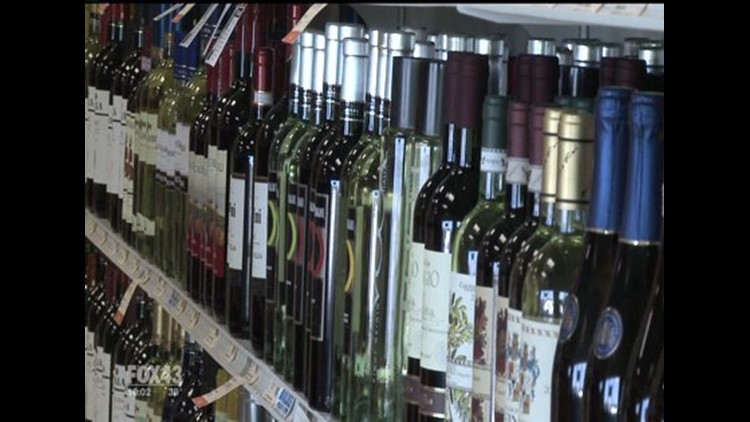Harrisburg, Pa– The Pennsylvania Liquor Control Board today released unaudited financial results for fiscal year 2014-15 that reflect record sales of $2.34 billion including sales and liquor taxes, a 4.2 percent increase over the prior year. Net profit would have totaled $132.8 million, 2.5 percent more than last year, had accounting changes altering the agency’s income statements moving forward not been implemented for fiscal year 2014-15.
Year-end cash and short-term investments increased $20.7 million, from $241.2 million to $261.9 million.
Net cash generated by operating activities totaled $139.1 million for the fiscal year. Such positive cash flow means the PLCB is in an excellent position to provide a transfer of at least $80 million in profit to the General Fund this year. The PLCB also deposited $334.4 million in liquor tax and $130.2 million in state sales tax into the General Fund last fiscal year. Nearly $8.5 million in local sales tax was turned over to Philadelphia and Allegheny County.
Release of the year-end financials was delayed this year due to new pension liability reporting changes effective for all government employers this year as required by the Governmental Accounting Standards Board (GASB), as well as workers’ compensation actuarial valuation changes. These changes, along with increases in the commonwealth’s other post-employment benefit liabilities, required additional time for the Office of the Budget and the Comptroller to finalize year-end financial statements and may cause delays in future years.
This is the first year for the commonwealth to report pension obligations on Pennsylvania’s Comprehensive Annual Financial Report, and it is the PLCB’s first year reporting its share of the obligation as required by the GASB’s Statement #68. The PLCB is the only commonwealth enterprise fund whose financials are separately reported in accordance with Generally Accepted Accounting Principles (GAAP). Therefore, the State Stores Fund is the only fund to separately report its share of the commonwealth’s unfunded pension obligation and changes to the unfunded obligation as expense or income on its fiscal year 2014-15 financial statements. For the year ending June 30, 2015, the PLCB’s pension obligation was determined to be $362.7 million, 2.9 percent of the state’s total unfunded pension liability of $12.3 billion.
In addition to requiring the PLCB to record its share of the commonwealth’s unfunded pension liability, GASB #68 also requires that annual changes in the liability and other actuarial assumptions be reflected against the fund’s net income. State Employee Retirement System actuaries determine these adjustments after the close of the fiscal year. A charge of $16.8 million was recorded to the PLCB’s net income for fiscal year 2014-15 as a result of this new GASB reporting requirement.
The commonwealth is self-insured for workers’ compensation benefits. In 2014, a new method for determining agencies’ contribution rates – one that relies more heavily on each agency’s actual claims experience and requires every agency to contribute more to build up reserves – was implemented across the commonwealth. This change doubled the PLCB’s workers’ compensation expenses.
Additionally, the commonwealth’s new insurance examiner determined the commonwealth as a whole had been insufficiently contributing to its self-funded workers’ compensation liability and increased the total liability for the fund by $160.5 million to $861 million.
The combination of workers’ compensation changes resulted in a $19.4 million increase in workers’ compensation accrued expense for fiscal year 2014-15.
The commonwealth’s total costs for funding retirees’ medical benefits were $341 million for fiscal year 2014-15, and the PLCB’s portion of that expense was $13 million.
The net impact of all three benefit accounting and reporting changes, all outside the PLCB’s control, totals a $49.2 million reduction in net income.
As a result, net income for the year totaled $83.6 million, down $40.1 million from the prior year.
Comparing against re-stated fiscal year 2013-14 financials using the same approach and methodologies, the PLCB ended fiscal year 2014-15 with net revenue of $132.8 million, a record amount, despite growing personnel costs.
The PLCB regulates the distribution of beverage alcohol in Pennsylvania, operates more than 600 wine and spirits stores statewide and licenses more than 20,000 beverage alcohol producers and retailers. The PLCB also works to reduce and prevent dangerous and underage drinking through partnerships with schools, community groups and licensees. Taxes and store profits – totaling more than $14.5 billion since the agency’s inception – are returned to Pennsylvania’s General Fund and provide financial support for the Pennsylvania State Police, the Department of Drug and Alcohol Programs, other state agencies and local municipalities across the state.
For more information about the PLCB and to review the unaudited fiscal year 2014-15 financials, visit www.lcb.state.pa.us.



